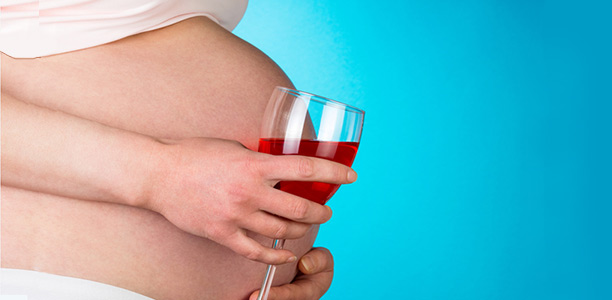Researchers studied 415 babies who had 3D photographs of their faces taken at age one. Mothers were asked about their drinking habits before and throughout their pregnancies.
“We know that alcohol use in pregnancy contributes to how the face is formed in the womb, said one of the study’s lead authors, Evi Muggli. “We found when analysing the detailed images in our study, that any alcohol in pregnancy, even low amounts can subtly influence facial development.”
The findings reinforce the message that for women who are pregnant, planning a pregnancy, or at risk of getting pregnant, avoiding alcohol is the best option, MCRI researchers Professor Jane Halliday and Ms Muggli said.
The differences between children exposed or not to alcohol were analysed in collaboration with the Medical Imaging Research Centre at the University of Leuven in Belgium.
“We used a sophisticated 3D facial analysis technique, mapping something like 7,000 individual dot points on the face,” co-lead author, Harry Matthews said.
The researchers emphasised the facial features observed were subtle and not visible to the naked eye, being less than 2mm. However, using the 3D facial analysis, the researchers did observe small changes to the mid-face – the nose, lips and eyes – of babies who were exposed to any amount of alcohol from the first trimester of pregnancy.
The finding of a low level of alcohol contributing the development of the face raises questions about the possible impact upon brain development and this is the subject of further research.
The study, published in JAMA Pediatrics, emerged from a longitudinal cohort study of the impact of prenatal alcohol exposure on the child. AQUA (Asking Questions about Alcohol in Pregnancy) is a study of 1570 Victorian women with comprehensive data around prenatal alcohol exposure.
“We were surprised to see that these comparatively low levels of alcohol do have a subtle impact and our findings support national recommendations to abstain from drinking alcohol in pregnancy,” chief investigator Prof Jane Halliday said.
Prof Halliday said that 30 to 40 per cent of pregnancies are unplanned and many women drank alcohol in that period before knowing they were pregnant. She said the AQUA study aims to improve the messages provided to women of childbearing age about risks of drinking during pregnancy.
Study co-author and Professor in Paediatrics and Child Health at the University of Sydney, Elizabeth Elliott said: “The information from our study is particularly important. It affirms my need to advise women to avoid alcohol during pregnancy and gives me new evidence to support that advice.”
The study’s researchers are now investigating children’s neurodevelopment as they get older and plan to follow the children up at school age.
Advice for mums-to-be
- The safest approach is not to drink alcohol at all if you are trying to conceive, could conceive or are already pregnant.
- If you did consume alcohol before you knew it was best to avoid it, the risk of your baby being harmed is very low.
- Talk to your GP, obstetrician or midwife about any concerns you may have.
Key Messages
- Drinking alcohol during pregnancy at low levels can subtly influence the way a baby’s face is formed in the womb.
- Researchers studied 415 babies who had 3D photographs of their faces taken at age one year.
- Mothers were asked about their drinking habits before and throughout their pregnancies.
- We saw an association between facial shape and prenatal alcohol exposure even if mothers only consumed alcohol in the first trimester.
- The findings reinforce the message that for women who are or may become pregnant, avoiding alcohol is the best option.
- This does not mean that the unborn baby is harmed if the mother has consumed some alcohol in pregnancy. There are many other factors that contribute to the baby’s healthy development.
- We observed subtle changes to the mid-face – the nose, lips and eyes – of babies who were exposed to any amount of alcohol in the first trimester of pregnancy.
- The changes observed are less than 2mm at most and are not visible to the naked eye. These children would not be recognised to appear different from their families.
- Using a technique developed by experts collaborating from Belgium, sophisticated 3D facial analysis measured almost 70,000 individual dot points on the faces.
- The finding of a low level of alcohol contributing to the development of the face raises questions about the possible impact upon brain development and this is the subject of further research.
- The overall AQUA study – a study of more than 1500 women with data on prenatal alcohol exposure – aims to improve messages provided to women about drinking during pregnancy.
(Source: Murdoch Children’s Research Hospital, JAMA Pediatrics)










